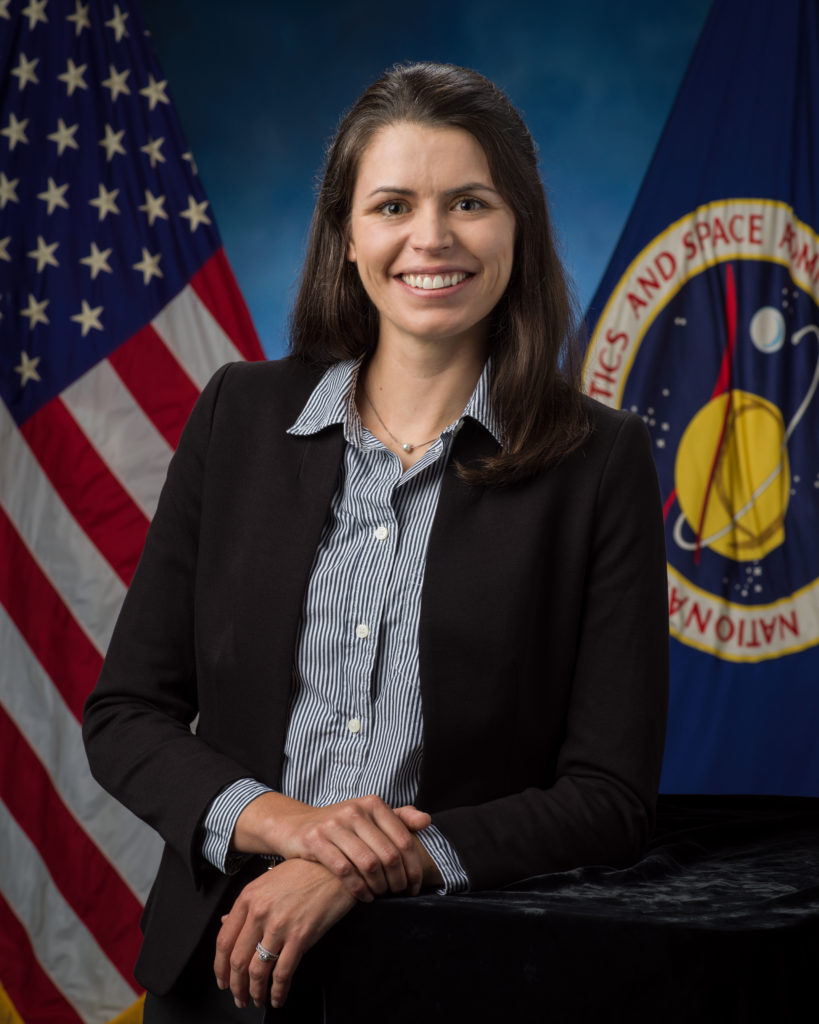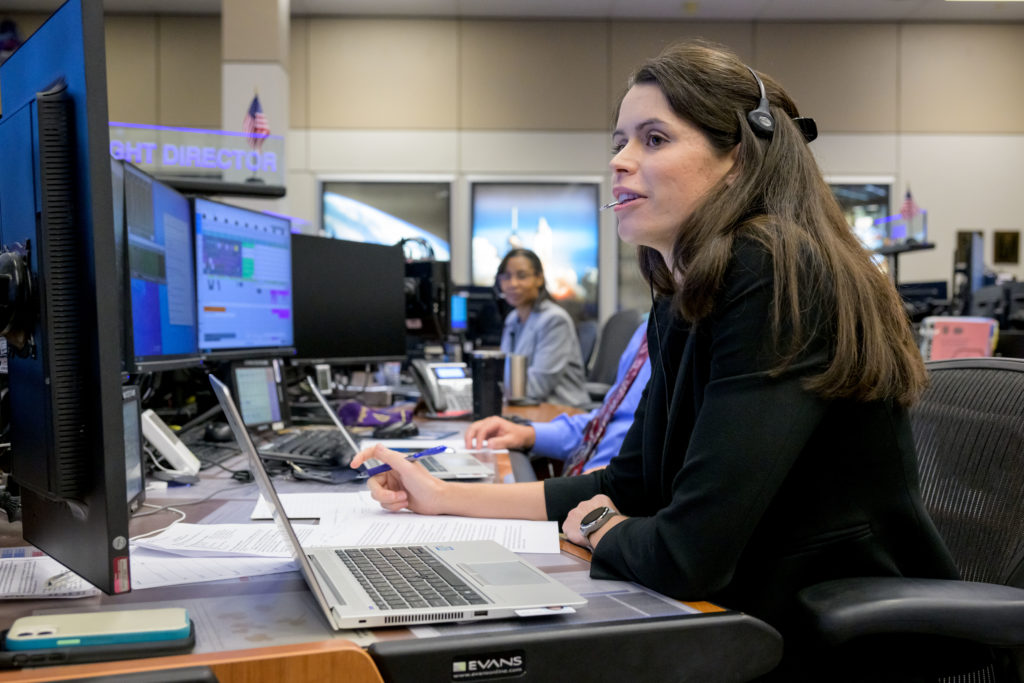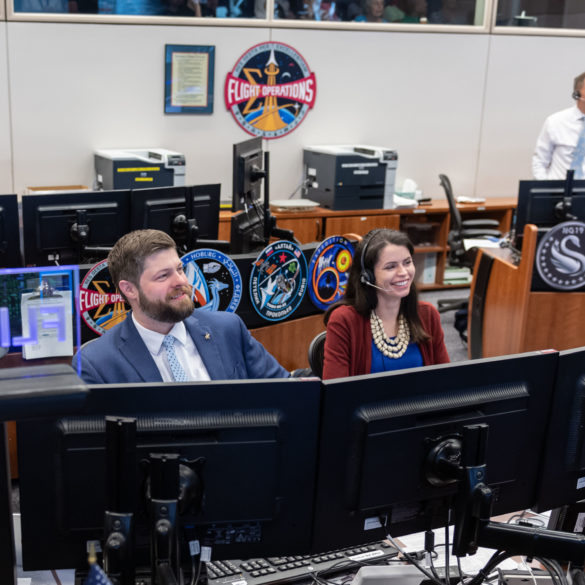With six sleeping quarters, two bathrooms, a gym, and a 360-degree view bay window, the International Space Station is larger than a six-bedroom house, according to NASA.
It is operated by a partnership of five space agencies from 15 countries, including NASA, Roscosmos, European Space Agency, Japanese Aerospace Exploration Agency, and Canadian Space Agency.
It is also where Nicole McElroy works as one of 25 flight directors for mission control.
What inspired you to pursue a career in aerospace?
It was really just the excitement to get into aerospace. I previously worked for Virgin Orbit, which is a company out in Los Angeles that launches rockets. It took me getting into aerospace and starting to work at this company to fine-tune exactly what I wanted to do and really fall in love with the real-time operations world. Flight directors look at the big picture, and we are running the entire mission control. We get to see everything really come together and make sure that we have a good plan for it all.
Can you walk through your journey to getting to NASA?
When I was in college, I had an internship for a rocket company, and that’s what really sparked my interest and that working in aerospace was actually something I could do. That got me hooked onto the rocket side of aerospace. It was really interesting, and I was able to really enjoy the work I was doing.
When I started at Virgin Orbit, I was on the propulsion team, so understanding how the propulsion stage systems work, so doing a lot of system design and understanding how the rocket comes together. While I was there, we went through the stages of designing our very first rocket, building our first rocket, and then also testing our very first rocket, so I was very fortunate to be able to see that entire system and then really enjoy the test process at the end.
I did that for about eight years and then I applied for the flight director role online. The role felt like a shot in the dark. I started full time here last, so June 2022. I went through about a year of training and then was certified as a flight director this past July.
*Propulsion is the act of moving or pushing an object forward. A propulsion system is an engine that produces thrust to push an object, such as an airplane or rocket, forward.
Did your parents have anything to do with you aspiring for a career in aerospace?
Neither of my parents worked in aerospace, but they were very supportive of anything I wanted to do. My dad worked as a project manager and consultant in the engineering realm, so he was definitely my inspiration for doing engineering at large.
I studied mechanical engineering at school because I wasn’t totally sure what type of engineering I wanted to do.

What is one thing you know now that you wish you knew in college?
Always think bigger. One thing that has helped me but took a while to learn is recognizing where my sandbox is. Whatever it is that I am working on, other people are working on other things, and their sandboxes are all over the place. It takes all of those people working together to make something successful.
I think one of the best things you can do is peek over the edge of your sandbox. If you can understand just a little bit of what the problems are that they’re facing, it makes it easier to be able to work together and come up with a common solution, rather than just focusing on your sandbox.
Who has been your biggest mentor or inspiration along the way?
I would say there have been a couple of key bosses at Virgin Orbit that really helped me to ask the right questions and really see the big picture and understand how systems work. For me, that was really insightful that there could be enough trust and enough bandwidth to be able to dive in and ask the questions that needed to be asked. It also helped me to figure out what to do with all of that and put that into a good test plan or good operation’s plan and then execute with it.
What do you consider to be your biggest accomplishment?
Before I came to NASA as a flight director, it was really the first successful launch of Launcher One at Virgin Orbit, going from what was nothing then having something fully worked and really feeling very proud of that accomplishment. It was such a team effort, but knowing that I had a piece of the puzzle all along the way was really amazing to see.
What does a typical day look like for you at NASA?
Day-to-day, we work three shifts a day 24/7, so there is always a flight director on a console and control that’s keeping an eye on the systems and putting together the plan to make a full day of operations. Our bigger days are dynamic operations like spacewalks. Success long term is making sure that we can really achieve the goals of being able to do as many experiments as we can and learn as much as we can while we’re in space.
What is your favorite thing about your job and working for NASA?
It’s the variety of everything that we do. No one day is the same. You are getting ready for a spacewalk one day, then you are learning about a different space vehicle the next day, and then preparing to do some maintenance to replace components in the water system on board the International Space Station after that.
You really get to see how many different complex systems make up the International Space Station and getting to touch and understand all of those has been a lot of fun.
What has been one of your fondest memories during your time at NASA?
We were working on a console and our Russian counterparts were doing Visual Basic for Applications (VBA), so I was responsible for making sure that the U.S. systems were right and that everything on our mission was getting the right configuration.
The Russian crew really made sure that we can support all of them by sending their crew outside to be able to do the spacewalk and really learn and get the most out of the time that they’re spending outside. That was really amazing.
*VBA stands for Visual Basic for Applications. It is the programming language of Excel, which was conducted for the development of optimized tools for documentation term search. This kind of project allows for the search of single and multiple word or term search for data extraction.

Do you find it hard or somewhat easy to balance your work and home life with such a high-profile and important job?
The cool thing is that there’s about 25 active directors right now, so although we’re working 24/7 shifts and three shifts a day, there is always someone on console. I work a variety of day shifts and work night shifts. Knowing that I have a team of directors that we can hand off the control and hand of the reigns and kind of rotate through the shifts really helps the work-life balance.
What is one piece of advice you have for anyone wanting to pursue a career in aerospace?
Try a lot of different things. I had experiences working in engineering design, mission operations, and manufacturing. Getting to see all of those different perspectives really helps me to have a broader understanding now, but it also helped me understand what it was I actually wanted to do. Don’t limit yourself to your first opportunity, but really try to get a broad range of opportunities.
Only five years ago, in 2018, did NASA name its first female flight director, Holly Ridings, according to National Geographic.
Since then, NASA has worked to break the barriers for women to pursue careers in science and engineering within the agency, paving the way for McElroy to shoot for the stars.
Sources: NASA, National Air and Space Museum, NASA, National Geographic




